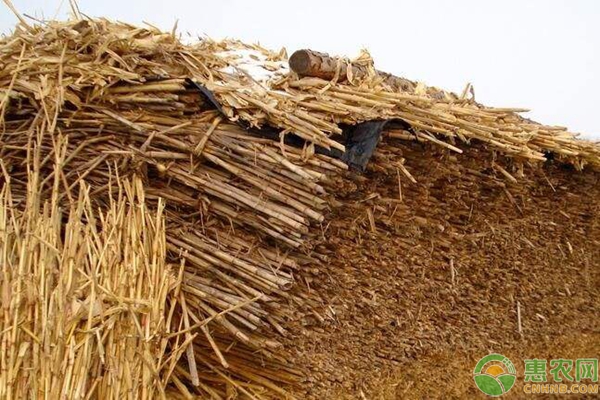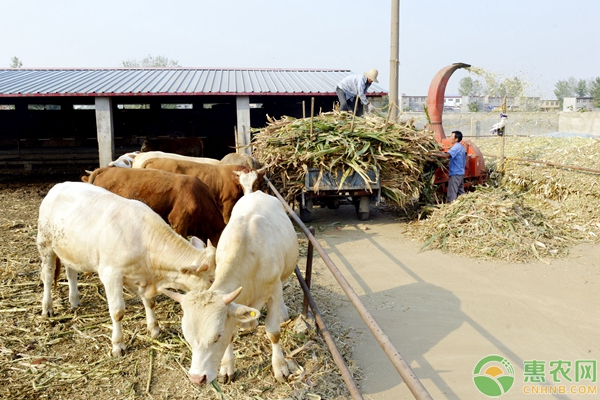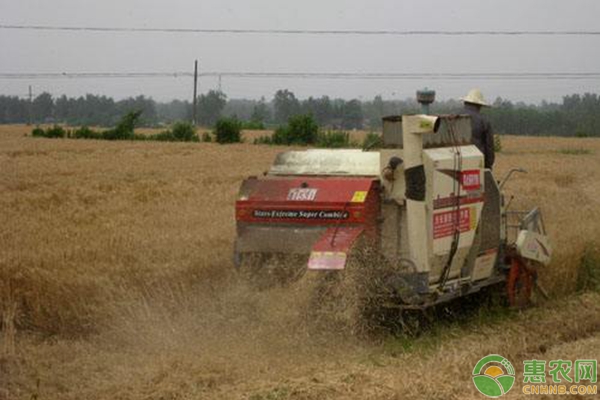Analysis of the advantages and disadvantages of direct returning straw to the field (with straw returning technology)
In recent years, with the improvement of people's awareness of environmental protection, straw burning has become a major event in agriculture. Although the straw ban is less effective for environmental pollution, what should be the stalks after the ban on burning? The following series of Hui Nongwang compiled a lecture on the use of straw returning to the six points of the lecturer of Hunan Agricultural University Plant Protection College. Let's go. The so-called straw returning directly to the field refers to an agricultural production measure in which rice is evenly scattered in the field and buried in the soil after harvesting! Most people think that straw returning to the field is of no use, in fact, in many cases, Without mastering the technology, the effect of returning to the field is not good. Many people still miss the era of straw-burning grass ash as fertilizer, which is simple and convenient. The effect of grass ash is still very good, but with the increasing environmental protection of the country, the current crop stalks have been completely banned! In many places, It is a very important task to make the crop straw burning work a task. If the straw is completely banned, where should these straws go? In addition to being used for returning the straw, the straw can be directly burned or fermented into biogas for combustion to generate electricity, or by carbonization of the straw, converted into biochar, and recycled to produce carbon-based fertilizer to return to the farmland, and finally realize straw recycling. Power generation or processing of biomass charcoal is theoretically very good, but it requires a lot of investment in actual operation. It is still difficult to achieve better profits. It is said that the current project using straw to generate electricity is less profitable. . Our single farmer is unable to invest so much capital to carry out these projects. The most practical way to do this is to return the straw to the field. Since the current ban on burning any straw, we have to open the method of burning straw into grass and ash. Today, the fertilizer Xiang Army published some superficial views on straw returning for your reference. The direct return of straw to the field has a significant effect on increasing yield. Although there are some unfavorable aspects, it can be avoided to the greatest extent by taking measures! Only by mastering the technical points of direct returning to the field, and using the proper science, can the effect of the fat field be achieved, and the benefits outweigh the disadvantages! First, the advantages and disadvantages of straw directly returning to the field advantage: 1. Increase soil organic matter and soil nutrients; Increase soil organic matter and improve soil physical and biological properties. According to analysis, dry straw contains 0.55% nitrogen, 0.2% phosphorus, 1.95% potassium, 15% silicic acid and 65% organic matter. After entering the soil, these nutrients are released by microbial decomposition and finally absorbed by the next crop. 2. Improve crop yields; Return soil nutrients and save fertilizer. Straw returning to the field can increase the total number of grains per panicle and increase the seed setting rate. The yield of early and late rice is significantly or significantly higher than that of straw not returning to the field. Studies have shown that the average yield of straw in the field of early and late rice increased by 8.2% and 8.6%, which was higher than that of rice straw ash returning to the field, and the yield of rice straw ash was increased by 5.9% and 3.5%, respectively. 3. Increase the activity of microorganisms and turn some slow-acting fertilizers into quick-acting fertilizers. Straw returning to the field provides a rich source of carbon for microorganisms, accelerates the growth of various microorganisms, and accelerates the circulation of various substances in the soil. On the other hand, microbial activity produces a series of intermediates, organic acids, etc., which promote the release of phosphorus and potassium in the soil. At the same time, it can promote the formation of soil aggregate structure and improve soil structure. 4. When saving agriculture, reduce air pollution caused by straw burning. Straw smashed directly after returning to the field, which is beneficial to fertilizing soil fertility and reducing pollution to the atmosphere, soil, water quality and environment caused by straw burning and disposal. Disadvantages: 1. Because of the excessive or uneven amount of straw returning, the soil microbes (that is, the microorganisms transformed by straw) and the crop seedlings compete for nutrients, and even yellow seedlings, dead seedlings, and reduced yields. The shortcoming of straw returning to the field is that it is easy to cause soil nitrogen deficiency. After returning to the field, the carbon content of the soil increases sharply, and the total amount of soil microorganisms also increases by about one time. The microorganisms use carbon as energy and nitrogen as nutrient. With less carbon and nitrogen, microorganisms take nitrogen from the soil, causing nitrogen deficiency in the soil. Therefore, when the straw is directly returned to the field, some nitrogen fertilizer should generally be added. 2. Returning straw directly to the field will increase the occurrence of weeds in the field, which may be related to the presence of weeds or weed seeds in the straw and an increase in the number of weed seeds in the soil. 3, after the straw is pressed back to the field, the soil becomes too loose, the pore size ratio is uneven, and the large pores are too much, resulting in running wind, the soil and the seed can not be in close contact, affecting the seed germination and growth. Therefore, it should be repressed or watered in time after sowing. 4. Some pests and diseases such as eggs and bacteria in the straw cannot be killed during the direct smashing of the straw, and remain in the soil after returning to the soil. Pests and diseases occur directly or in winter. In particular, the direct return of straw to the field may increase the occurrence of rice stem borer and leaf roller, and serious field in the south may cause the outbreak of stem borer, so it is necessary to apply pesticide control. Second, the technical points of straw returning to the field 1. The current straw returning field is generally started when the rice combine harvester is operated. When the rice is harvested, the rice straw is smashed and evenly spread in the field, and then buried. 2. The straw in the field is not as good as possible, depending on the actual fertility of the paddy field. The fertile rice fields are less used; the more barren, the more the dosage. Generally it is about 300kg per mu. 3, straw returning to the field will cause soil nitrogen deficiency, so at the same time returning the field, a certain amount of ammonium bicarbonate or ammonium sulfate should be applied per acre, about 15kg per mu. 4. With 50% pyrazosulfuron-dichloroquine WP 450g / hm2, it was applied 7 days after transplanting rice, and the weed control effect on early rice and late rice field was above 90%. 5. Spraying 20% ​​flubendiamide 30g / hm2 and 20% chlorantraniliprole 30g / hm2 twice in early rice and late rice seedling stage and heading stage respectively, for early rice and late rice stem borer and rice bush leafhopper The control effect is above 86%, and paddy field irrigation is not conducive to insects wintering! In the late rice heading stage, 25% pymetrozine 75g / hm2, milk maturity with 50% nitenpyram 60g / hm2 spray 2 times, the control effect of rice planthopper is more than 95%. 6. Straw directly returned to the field In the case of water in the paddy field, that is, under the anaerobic conditions of the microorganism, a series of toxic substances will be produced, which will easily cause the black roots of the next crop. Therefore, it is also necessary to pay attention to the drainage of the sun, the alternating dry and wet environment is not only conducive to the release of nutrients, but also effectively reduce the production of toxic substances. Stainless Steel Powder Fire Extinguisher Stainless Steel Powder Fire Extinguisher,Sus Powder Fire Extinguisher,9Kg Powder Fire Extinguisher,Sus 1Kg Powder Fire Extinguisher JIANGSU NEW FIRE FIGHTING TECHNOLOGY CO.,LTD , https://www.newayfire.com

